Caravan Touring: Scintillating Scandinavia
Touring Caravans Ultimate Guide
Caravan reader, Ken Elborn, relives his incredible 65-day, jaw-on-the-floor caravan touring adventure through Sweden and Norway.
It is 45 minutes past midnight yet the sun remains well above the horizon. It’s mid-June and our new caravan is undergoing a ‘short’ test run to north of the Arctic Circle in Norway, land of the Midnight Sun!
Read Ken and Pam's top caravan touring tips for Scandinavia here!
Our itinerary takes us through the Netherlands and Germany to access an overnight ferry to Oslo creating easy access to Sweden for the northerly push. We’ll enter Norway above the Arctic Circle and then head south again, taking in the entire length of ‘The Lofoten Islands’.
We’ll also explore the 650km Kystriksveien (The Coastal Route) along highway Fv17, and include a visit to Atlanterhavsvegen (The Atlantic Road). Both are highly rated by National Geographic and Lonely Planet as truly beautiful journeys. We’ll conclude the trip with a return after 20 years to Geiranger Fjord, deemed the most beautiful.
The motorhome is the preferred ‘mobile home’ for northern Scandinavia, while towed caravans are rare. Mind you, there is no reason why caravans should avoid such an exciting adventure in a stunning part of the world.
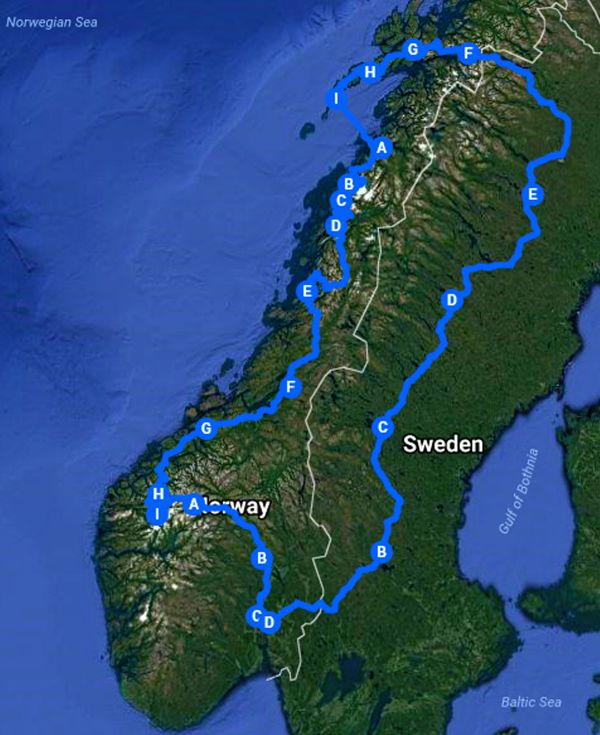
Crossing the Channel in Style
We chose Stena Line’s Harwich to Hook of Holland crossing, and were highly impressed. Our two-berth comfort class outside cabin came with double bed, coffee/tea making facilities and to our surprise, complimentary crisps, nuts and 2 mini bottles of wine.
It transpired our pre-booked dinner came with waiter service and the meal was of a high standard. This crossing is excellent and recommended.
Getting going across Germany
Choosing the 11pm crossing did mean an early breakfast as the ship docked at 08:00. However, this became a bonus as it provided the opportunity to cover a distance of 382 miles (all motorway) and stop overnight just 21 miles short of Kiel, our next port of departure. As it saved a day, it made sense to motor on through Germany and enjoy an extra day at an idyllic location.
Campingplatz Idyll at Bornhoved near Kiel is close to the A21 (Jct8) and well signed. Although a typical German site with many statics, there are many touring pitches with a 16A hook-up, a small bar/restaurant, acceptable facilities and on the edge of a large lake providing pleasant walks and bird watching.
Supermarkets are within walking distance, should you require any last minute provisions. Met with a German gentleman here who tows his caravan all over his country with a tractor at 15 mph.
Ferry to Norway
To minimise the long drive north, we boarded the Color Line ferry from Kiel to Oslo. (Dep. 14:00 – Arr. 10:00). These vessels are along the lines of a cruise ship with shopping promenade, theatre show and everything one would expect on such a vessel, all to a high standard including the double-bed outside cabin.
The choice of food at the buffet dinner remained in keeping with a cruise ship and likewise my 70th birthday breakfast. As we disembarked at Oslo the sense our ‘special’ Scandinavian tour had commenced and what a way to celebrate a milestone age!
Into Sweden
Travelling through Sweden in ’96, we applied Allemansrätten (the right to roam) and ‘wild camped’ at many beautiful locations. However, times change, and with excellent security on campsites, we opted to use them for all our overnighting this time.
Departing Oslo for Sweden on 25 May we travelled up Inlandsvägen (E45 inland road or as I call it, the road up the middle) to access northern Norway in the shortest time. The scenery is primarily trees and lakes, but occasionally there’s a truly delightful view worthy of any camera lens.
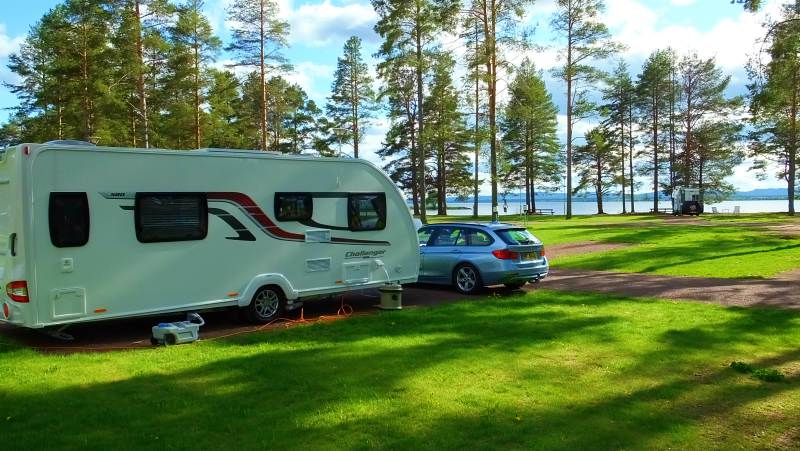
The journey was broken up as follows, with two-night stays at each site:
- 217 miles to Orsa Semesterby Camping
- 192 miles to Östersunds Stugby & Camping
- 185 miles to Storuman Camping
- 192 miles to Arctic Camp Jokkmokk, (Just above the Arctic Circle – thus qualifying us for a moose silhouette sticker to be adhered to the rear of the caravan!)
Swedish Camping Cards
All site receptions wanted to see our Swedish Camping Key Europe card (SCR) with only one that would have accepted the UK version.
In general, Swedish sites have acceptable sanitary facilities, showers included, kitchen, dining areas with free cooker, possibly a dishwasher, microwave and varying speeds of free Wi-Fi. The minimum amperage we encountered was 10 and connections may require the European two-pin with side earth.
Some sites are along the lines of Holiday Resorts, with a 12-lane bowling alley at 900 pitch Orsa, and an Aqua Park at Jokkmokk. The latter had the best children’s play area I have ever seen.
Natural differences
Since leaving Oslo it was noticeable the leaves on trees had only recently opened and some still in bud. Albeit late May, daffodils and tulips in full bloom and in my case, a sharp reminder that the northern pollen season is somewhat later.
On the journey so far 5 sightings of deer either on or by the road and a glimpse of a huge bull moose, highlighting the concentration required when travelling on Scandinavian roads.
With our progression northwards, daylight soon became 24 hours and the birds not sure when the dawn chorus should be sung with large numbers of fieldfare not necessarily the quietest of birds. On some campsite lakes we had sightings of Goldeneye, red-throated diver and red-breasted merganser.
It is an easy drive through the rugged beauty of The Kiruna Pass to access Norway, yet we were somewhat surprised to see lakes still partially covered in thick ice. All the roads were clear, but sometimes the volume of snow by the roadside reminded us how far north we were.
Norwegian views
16 miles past the Swedish/Norwegian border, we reached the family-owned Hærsletta Camping located where the E10 joins the E6, and 237 miles from Jokkmokk.
As our entry point for the Lofoten Islands, this site is rustic, but pleasant with fine views over Herjangs Fjord.
Still better vistas are available south of Hærsletta in the town of Narvik, with the most impressive viewpoints accessed by cable car.
What are Norwegian campsites like?
Camping facilities in Norway are clean, more than adequate, but there are usually small numbers of toilets and showers, and the latter are charged for and timed – typically, 5NKR or 10NKR, though one site charged 20NKR. Duration of the shower varies between a shampoo-in-the-hair three minutes, to an acceptable six minutes.
Electric hook-ups are 10A or 16A, with a two pin plug required. You will encounter reverse polarity and changing your connection will make no difference. They push 110 volts down both live and neutral, yet ironically the caravan electrics work 100%.
Where a site is adjacent or near sea fishing, a fish preparation area and generally a freezer are available (free) to preserve your catch.
Dash cam delight
Next, we towed eighty-nine miles south along the E10 (King Olav V’s road) to Gullesfjordbotn Camping, which has fine views up the fjord, with the tidal foreshore a good habitat for breeding terns and Oystercatchers with their chicks.
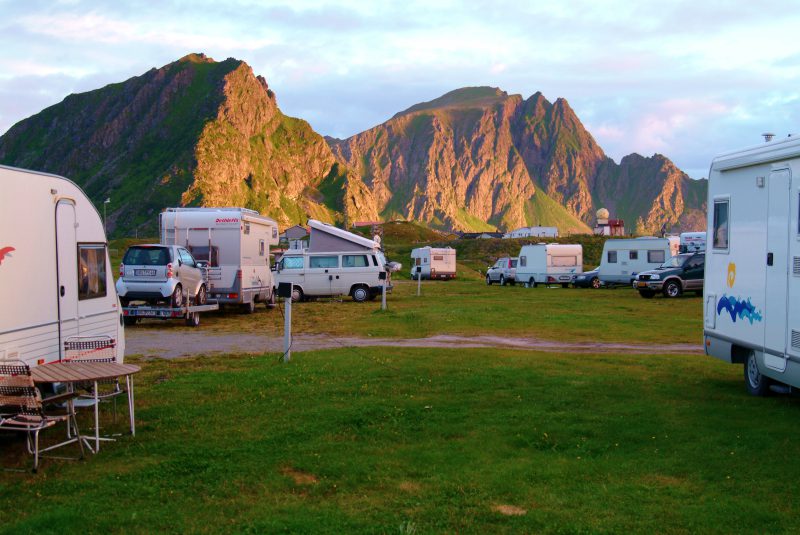
The HD dash cam was already proving an invaluable purchase, capturing many outstanding views that we couldn’t have recorded any other way. Eighty miles due north of this location, is Andenes Camping, a superb destination for whale safaris. Sightings are all but guaranteed, and, if the sun doth shine, so are remarkable views of the midnight sun.
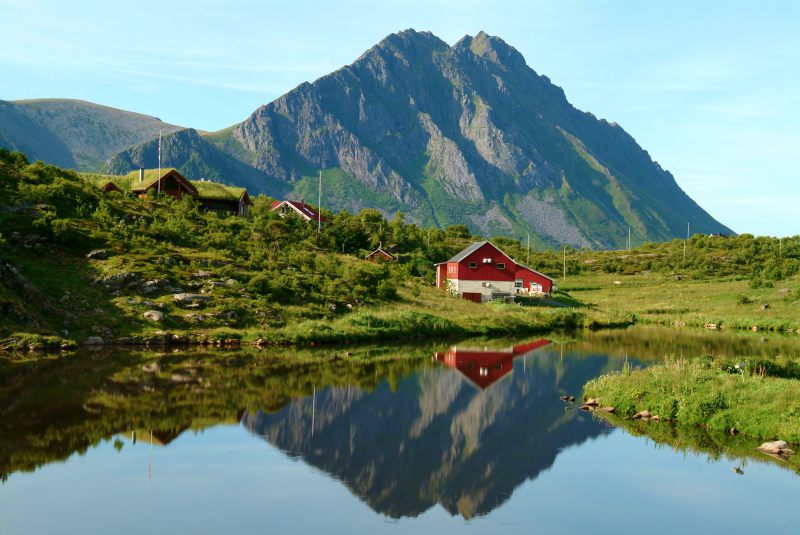
The 62-mile journey southward included an amazing 13 tunnels, and we returned to the family run site of Lyngvær Bobilcamping. Most of its pitches have fine views across Gimsøy –Straumen toward more southern reaches of the islands. Sightings of black grouse on the nearby slopes made for a personal highlight.
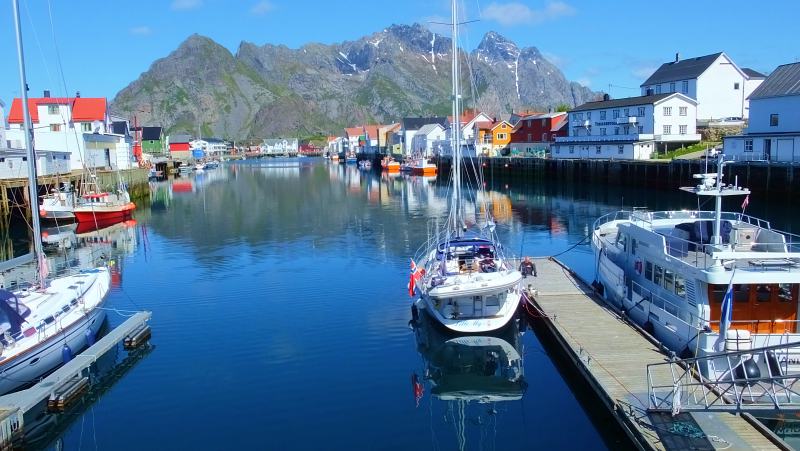
Nearby Henningsvær is a pleasant, attractive town with many ‘drying racks’ for cod, a prolific fish in these northern parts.
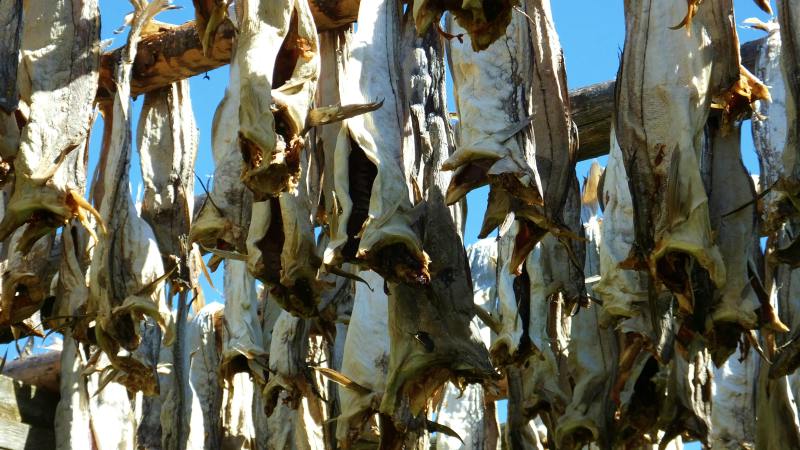
Golf, anyone?
At 11pm on 9 June we drove to Vinje and the Lofoten Links golf course, where golfers tee off at midnight! The sun is high in the sky, with a mirror-image on the calm as the time drifted through 00:00 ! A truly memorable experience.
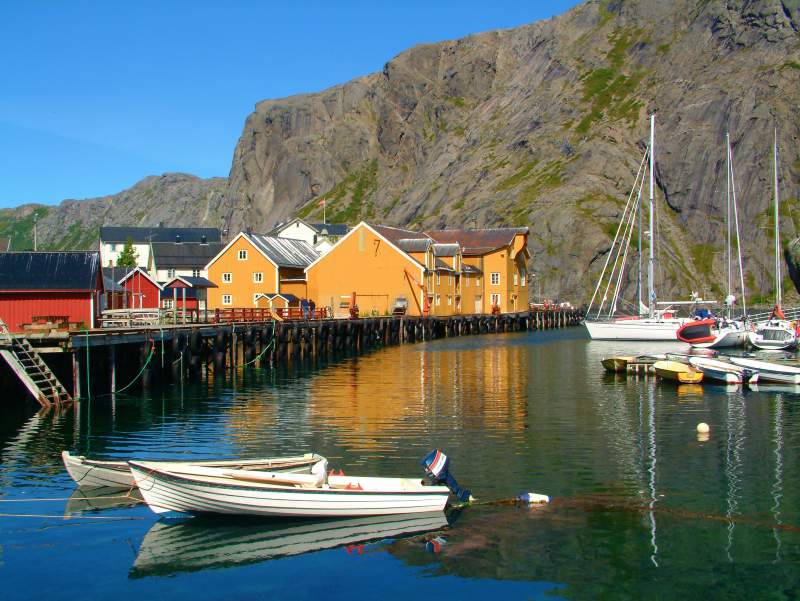
If you wish not to change campsite, highly recommended days out include the picturesque fishing village of Stamsund, whilst Nusfjord has all the Lofoten charm that you’d expect. At Borg, the Viking museum founded on the discovery of a chieftain house in 1983 is also well worth a visit.
Going back in time
Towing the van a further 68 miles, we passed Reine to arrive at Moskenes Camping located almost at the foot of the islands, just a short drive from Å. Two hundred metres from the camping, access to the four-hour ferry crossing to and from Bodo on mainland Norway.
The Lofoten archipelago ends at Å (Å i Lofoten) a town that feels like a step back in time. Here you can take a boat fishing trip, which almost guarantees a successful catch. Afterwards, we grab the ‘mainland ferry’, and, after disembarking the boat at Bodo, we commence ‘Kystriksveien’ by joining road Fv17.
After 18 miles, we reach PlusCamp Saltstraumen, which proves more than adequate, but most use as a night halt. Here, Saltfjorden and Skjerstadfjorden join creating one of the strangest and strongest tidal currents in the world.
This location is also renowned for good fishing from land, a point proved by the multitude of coalfish in our van’s freezer. Best views of both the maelstrom and area are from the bridge over this phenomenon.
Full of possibilities
Furøy Camping is 90 miles further on and offers stunning views over Holandsfjorden, with the nearby mountains often encircled by wispy cloud. This well-maintained, family owned site is worthy of a few days R&R.
On route we had passed the Engenbreen tongue of Svartisen Glacier, (with a view point on Fv17). It’s the second-largest in Norway and the lowest in Europe at 20 metres above sea level. The site arranges trips to, and walks on, this glacier.
Again, there are possibilities for fishing, cruise ships passing by, and, for us, the chance sighting of a sea otter and fine elevated views.
In the Arctic
Our next destination along the Fv17 entailed two ferries, Forøy to Ågskardet and Jektvik to Kilboghamn. The latter is significant, as you return south of the Arctic Circle at sea. Actual driving distance to Polar Camp, our next site, is a short 20 miles, but with the weather not favourable, we opted to use the site as a stop-over.
62 miles further on, there’s another ferry from Nesna to Levang and we arrive at the delightful setting of family run Sjøbakken Fiske Camping complete with its novel artwork.
The welcoming owners take great pride in their site and again, the area’s worthy of a few days' exploration. Many people hire boats and, later, sing the praises of the site while on the jetty filleting their cod, coalfish, haddock or halibut.
Disappointingly we must continue using two more ferries, Tjøtta to Vistnes (a scenic route) and Anndalsvåg to Horn. A total of 90 miles driving and we arrived at the adequate Vennesund Brygge & Camping site, adjacent to our final ferry (at this stage) and fortunate to witness another truly stunning midnight sun.
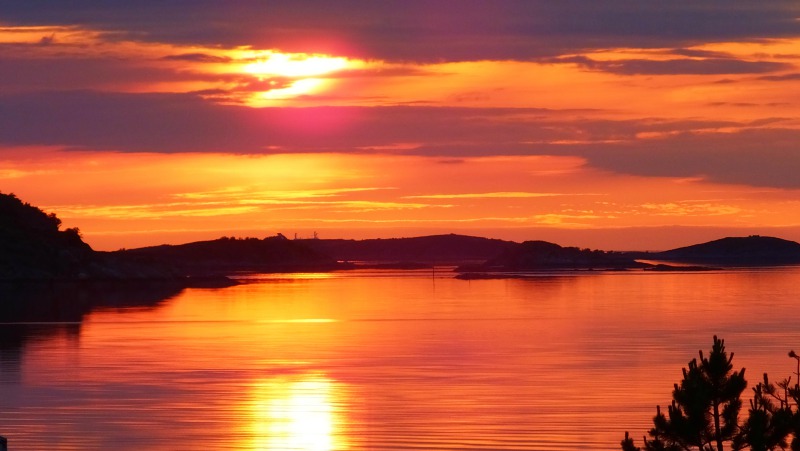
The ferry from Vennesund to Holm continues along the Fv17 towards the E6, and as we passed Steinkjer we had completed Kystriksveien. Ahead of us, yet more unbelievable scenery awaits, in an area of this wonderful country appropriately referred to as ‘Fjord Norway’.
Water scenes
North of Trondheim our chosen location produced a dramatic change of scenery, a touch of north Devon; farmland and rolling hills. With another 154 miles on the journey, we arrived at the peaceful location of Soria Moria Camping close to the small town of Verdalsora and adjacent to Rinnleiret Nature Reserve.
The site is ideal for a stroll with good possibilities for bird watching on the tidal inlets, while a drive around the waters of nearby Leksdalsvatnet produced good sightings of Slovenian Grebe.
Passing Trondheim we travelled west on the E39 one hundred and thirty miles to Valsøya Fjordcamping. The flat terrain of the small site is nothing special, but that’s adequately compensated by the astonishing views around.
Here, I saw both cod and mackerel caught off the jetty. Utvalgte Spisesteder is a chain of 18 privately-run Norwegian family restaurants serving high quality traditional food and Valsøya is a part of that group. The day we arrived we partook of a delicious buffet, a real treat.
Islands everywhere
From Valsøya, we had the opportunity for a full day out, minus the caravan. Between Kristiansund and Bud, there are innumerable islands with eight linked by bridges creating The Atlantic Road. It’s a stupendous section of engineering, without doubt scenic and it’s best appreciated travelling east to west.
The E39 continues courtesy of two ferries, Halsa/Kamestraum and Molde/Vestnes toward Alesund. A few miles from the second ferry, road 650 directed us toward our final internal water crossing, Liabygda to Stranda.
After 118 miles, we pulled into the quiet, pleasantly- located and level, Hellesylt Camping with views up Sunnylvsfjorden to the mouth of Geiranger Fjord. This is deemed the most beautiful in the world and something of an NCP, where the ‘C’ stands for Cruise Ships.
There are campsites at Geiranger accessed by road 63 from either the north or south. However, Norwegian maps highlight road 63 as CLOSED for towed caravans, although you do see them on the town’s campsites.
Hairpins and waterfalls
North of the town, Ørnevegen (Eagle Road) a steep zig-zag encompassing 11 hairpin bends, a road used by lorries and coaches, so not ideal for caravans!
The small town of Hellesylt and the impressive waterfall, Hellesyltfossen, are just a short walk from the site, also close to the region’s two main attractions of the Dalsnibba Skywalk and the Briksdal Glacier near Olden.
Cruise ships tie up most mornings in front of the campsite. Ironically, having a gargantuan cruise liner parked in front of the caravan for about an hour was a novelty and did not deter our stay.
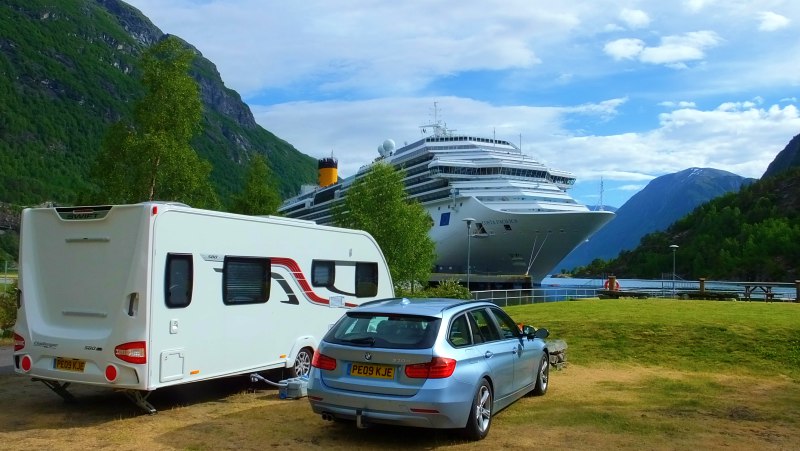
As disembarking passengers boarded coaches for their special day out, it became apparent they were visiting little bits of Norway, while we were immersing ourselves in a different way.
To take the car on the ‘must-do’ Hellesylt to Geiranger ferry is now expensive, but in fine weather it’s rewarding. A multi-language commentary describes the trip’s highlights, including a series of waterfalls named seven sisters.
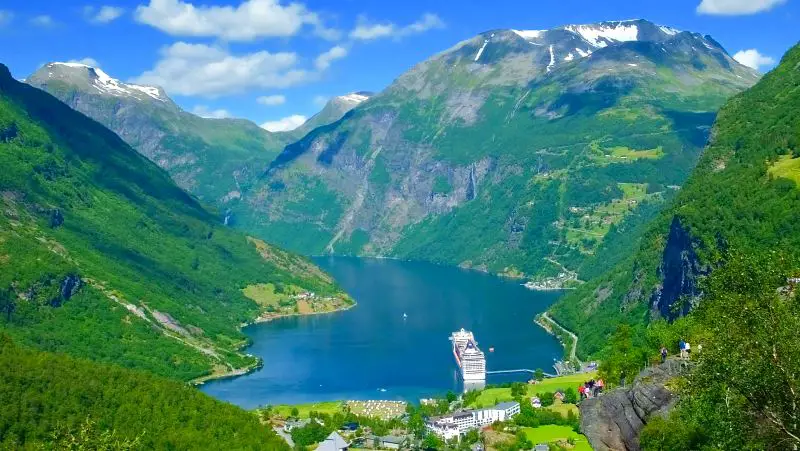
At almost a mile above sea level, the dizzy heights of Dalsnibba are to the south of Geiranger. The £11 entry fee rewards you with snow-capped mountains all around and the Skywalk viewpoint affords an incredible panorama of Geiranger Fjord.
Hidden treasure
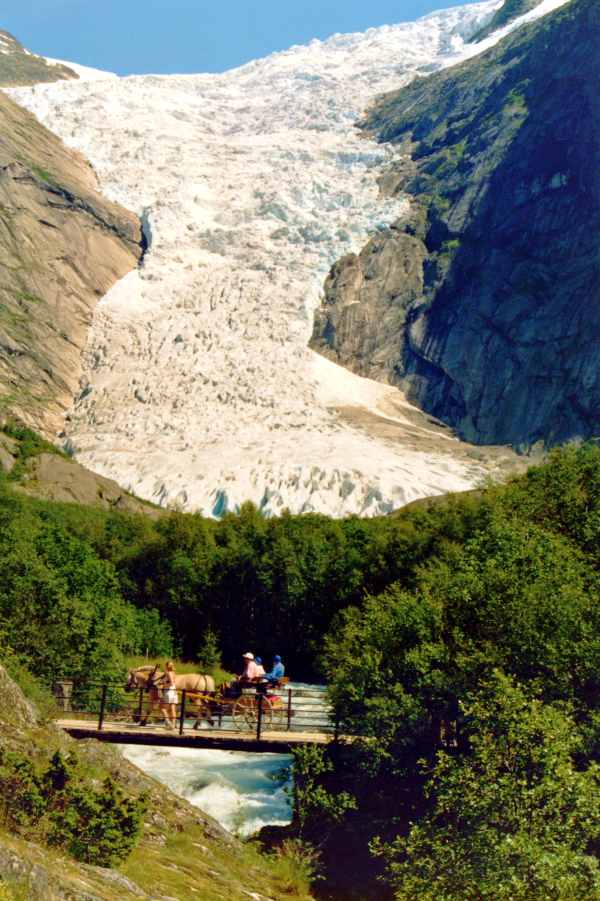 Courtesy of locals we learnt of a hidden treasure close by. The scenery on the drive to Øye is, in itself, a treasure (road 655) with the destination village located at the end of Norangsfjorden. The Hotel Union (1891) is a real time warp and is worthy of a visit.
Courtesy of locals we learnt of a hidden treasure close by. The scenery on the drive to Øye is, in itself, a treasure (road 655) with the destination village located at the end of Norangsfjorden. The Hotel Union (1891) is a real time warp and is worthy of a visit.
In the early 1900s, steam liners stopped at Øye for excursion passengers to travel by pony and trap to Hellesylt! When travelling to Øye, there’s an unusual cultural monument in a lake, Lygnstøylvatnet. A major landslide (Storesvora) in 1908 blocked the river Lygnn, flooding the valley floor and farm dwellings. The remains of 11 farms are still visual in the crystal clear water.
For us, the 48-mile trek to Oldevatn camping midway between Olden and Briksdal is worthwhile. This road is narrow with passing places, but generally does not cause a problem for caravans.
Glaciers ahead!
The family-run camping is immaculate, with mirror image views of the surrounding mountains in the amazing blue-green lake frontage, the water is provided from a tongue of the great Jostedalsbreen Glacier at Briksdalsbreen.
We visit the glacier, and, after paying 50NKR to park (£1=11NKR), we ascend 3.5km to access the face. For a fee, you can avoid most of this walk, by taking a Troll Car (an overgrown golf buggy!).
It costs 110Nkr one way, 210 return. Just grabbing a ride up would suit many! As we made our way through the glacially-carved, green valley, a resounding explosive sound somewhere above us confirmed our closeness to the glacier, with ice having parted and cracked.
Further on, we pass the waterfall Kleivafossen reminding us how rapidly the ice melts, then, suddenly, before us we see the glacier. Shockingly, it has retreated a huge distance in the 20 years since we last saw it, and it now perches high up in a cleft in the mountain… technically unreachable.
Road 15 from Olden in the direction of Lom offers truly outstanding scenery. We engaged our first climb of any significance, a couple of hairpins and, as you exit the third tunnel, a complete change of scenery, rugged and barren.
Outdoor activity
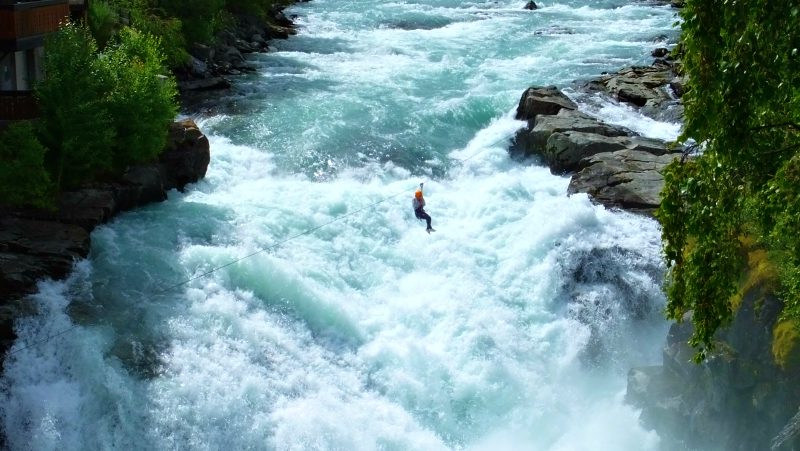
77 miles on, Donfoss Camping sits alongside mini rapids with a majestic rock backdrop and is within easy visiting distance of Lom (17 miles). The town itself has two campsites, but the setting at Donfoss far outweighs either.
In season Lom is a hive of activity, with people zip-wiring directly over Prestfossen Waterfall on the river Bøvra; queueing to partake of a snack at renowned Bakeriet i Lom, or visiting the outdoor Bygdamuseum with 22 buildings dating from 1613.
We love the town’s centrepiece, Lom Stavkyrkje (Stave church), a stunning wooden church built in the middle of the 12th century.
Our day-visit to Lom started on a huge high, when we spotted a giant moose trotting alongside the road. Suddenly, it decided to leap over the roadside barrier and crossed right in front of our dash cam. It could have gone badly awry, but what a piece of video footage we got!
Lillehammer and the Olympics
With our tour nearing conclusion, our penultimate site in Scandinavia, Biristrand Camping, is little more than 6 miles south of Lillehammer (exit J.79 onE16) and 130 miles from Donfoss. The sloping site has fine views across the largest inland water mass in Norway, Lake Mjøsa, with its surface area of 362km².
The town of Lillehammer hosted the 1994 Winter Olympics, and a visit to the top of the ski jump provides some insight into how brave/crazy those athletes are! Nearby, one of the most visited attractions in the town is the impressive Maihaugen outdoor museum highlighting life in the Middle Ages.
North of Oslo
 Our final few days are spent at the grassed sloping site of Utvika Camping on road 155 (off the E16 and 95 miles) overlooking Tyrifjorden, the country’s fifth-largest lake, and just 26 miles north west of the country’s capital, Oslo. The site is in a pleasant setting, but in high season the facilities struggle. It was the most expensive of the trip and only offered cold showers!
Our final few days are spent at the grassed sloping site of Utvika Camping on road 155 (off the E16 and 95 miles) overlooking Tyrifjorden, the country’s fifth-largest lake, and just 26 miles north west of the country’s capital, Oslo. The site is in a pleasant setting, but in high season the facilities struggle. It was the most expensive of the trip and only offered cold showers!
Oslo has so much on offer and is best researched online. However, one of the most visited locations is Vigelandsparken (free) the world’s largest sculpture park, created by a single artist, Gustav Vigeland. It’s unusual and, we think, not to be missed.
On the 18 July I glance at the midnight sky around me. It is dark, well… almost, yet in the distance it appears dawn is breaking! It seems like it could be a metaphor. As I reach the end of my 70th birthday present, all sorts of new and exciting adventures lie ahead. Maybe it’s time to start planning where we should go to celebrate our 50 years of marriage?
Scandinavian Tour 2016 in numbers
| Tour Duration | 65 days (including three days in the Netherlands) |
| Number of British vehicles seen | 5 |
| Number of sites | Germany 1 Sweden 4 Norway 16 Netherlands 1 TOTAL 22 |
| Number of ferries | Return Harwich/Hook of Holland 2 Return Kiel/Oslo 2 Norway internal 10 Sightseeing 4 TOTAL 18 |
| Number of Tunnels | 104 |
| Total distance in tunnels | 79 miles |
| Longest tunnel | “Svartistunnelen” (Known as Black Ice Tunnel) 4¾ miles |
| Total mileage towing caravan | 3,511 (to & from mid-Wiltshire) |
| Diesel expenditure | £696 |
| Total sites expenditure | £1,384 (including 2 persons showering daily!) |
| Ferry expenditure | £2,020 (excluding return ferry Geiranger Fjord – Got a freebie!!) |
| TOTAL COST | £4,100 excluding incidentals, coffees, snacks, meals out, etc, and, of course, housekeeping (most of which we’d have at home) |
Caravan & Motorhome Club Tours
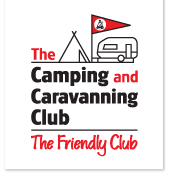 If you like the sound of this touring adventure, but don’t want to travel alone, we’d recommend the variety of European and Worldwide escorted tours organised by the Caravan & Motorhome Club.
If you like the sound of this touring adventure, but don’t want to travel alone, we’d recommend the variety of European and Worldwide escorted tours organised by the Caravan & Motorhome Club.
Pick one of its tours, (across most of Europe, or in America, Canada and even Australia and New Zealand, and the Club’s tour hosts will ensure you take in all the highlights of that region, while touring at a safe and comfortable pace and staying on top-quality campsites.
Jaw-dropping scenery comes as standard on these tours, and you may well make friends for life among the like-minded folk on the trip.
You could try the 15-night Picturesque Provence adventure (from £1,259) or take in the staggering scenery of the Alps in the Club’s Alpine Austria tour (from £1,079)
E [email protected]
W www.caravanclub.co.uk/overseas-holidays
Essential Info
Autopass Norway autopass.no/en/visitors-payment
Camping Key Europe card, Sweden scr.se








Recent Updates
Caravan showers: all you need to know
In this guide, we’ll discuss the different types of showers, how they work, and how to fit an external shower point to your caravan ...
Caravan towing: all you need to know
Towing a caravan may seem daunting initially, but a few simple tips can make the journey enjoyable and ...
All you need to know about towbars & towballs
Flange, detachable, swan neck, retractable – towbar technology choice is bewildering. Don’t worry. We’ll ...
Caravan WiFi: everything you need to know
Caravan holidays are the ultimate way of getting away from it all, although we sometimes need a link to the ...
Caravan insurance: all you need to know
Navigating the world of caravan insurance can feel like a daunting task. Fear not, as this comprehensive ...
Buying a caravan: what you need to know
Let us guide you through some of the complicated things to think about when first looking at buying a ...
Caravan awnings: a buyers' guide
Caravan awnings are a fantastic addition to any caravan as they are one of the simplest, quickest and most ...
Caravan electrics: avoid tripping out
All caravan owners have overloaded their mains supply at some time. Here’s how to master caravan electrics ...
Caravan heating systems: a quick guide to caravanning warmth
When winter is here, you’ll be glad of a decent caravan heating system if you’re out touring. Here’s how the ...
Caravan damp: a complete guide
There's little more guaranteed to strike fear into the heart of a caravan owner than the word 'damp'. But if ...
Other Articles
Caravan jockey wheels: the definitive guide
A well-functioning caravan jockey wheel can make all the difference to manoeuvring away from the towcar, especially if you don't have a caravan mover ...
Caravan cooking recipes
Caravan cookery inspirational ideas. No need to stress out in the kitchen with these quick and easy ...
Caravan bike racks: a complete guide
Exploring the beautiful surroundings while on a caravan trip is undeniably one of the greatest joys of the ...
Caravan solar panels: all you need to know
Whether you dream of roaming off-grid or just fancy reducing your carbon footprint, fitting solar panels to ...
The ultimate guide to caravan layouts
Choosing the right layout or floorplan of your caravan is an all-important part of the buying process – find ...
A guide to seasonal caravan pitches
Our in-depth guide to finding and securing seasonal caravan pitches on your favourite campsite ...
Caravan weights and payloads: a quick guide
The terminology of caravan weight – MIRO, MTPLM, noseweight, kerbweight, payload, weight plate upgrade – is ...
The ultimate guide to caravan motor movers
Caravan motor movers: everything you need to know about remote control caravan manoeuvring ...
Caravan cleaning: All you need to know
Whether you’re taking the caravan out for the first time or it’s just in need of a spruce up, our guide will ...
18 essential items for camping with your dog
Camping is for the whole family – including our four-legged members. Here's what you'll need to keep your dog ...